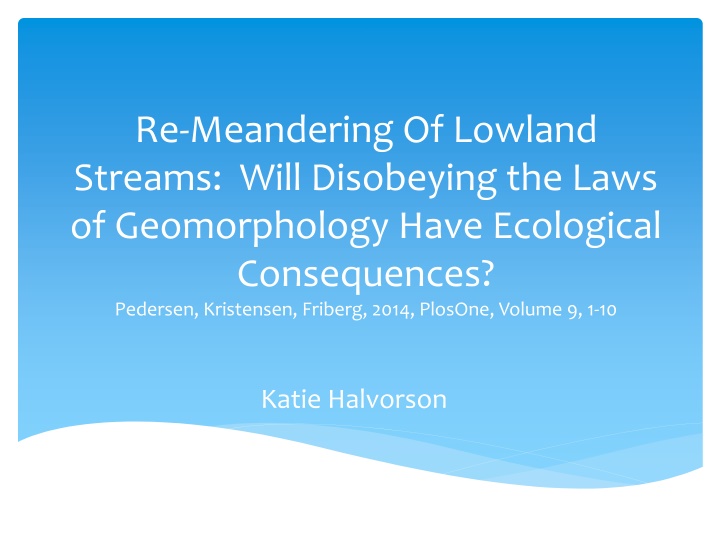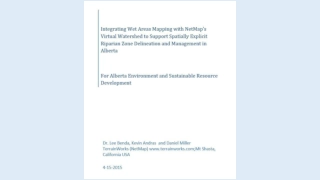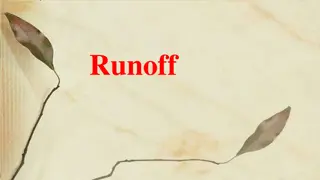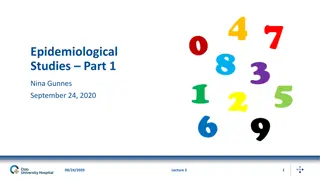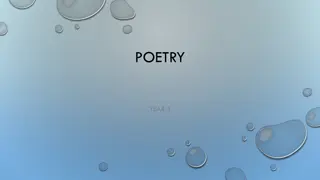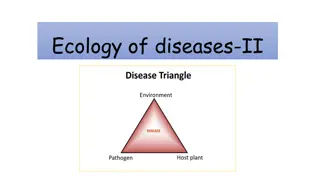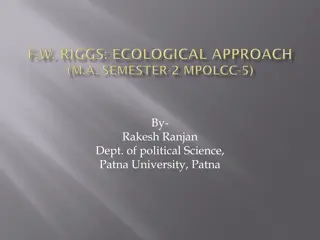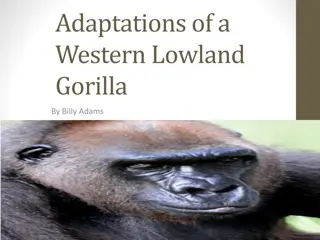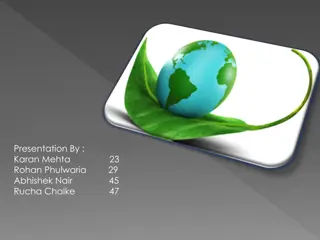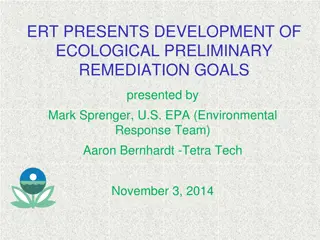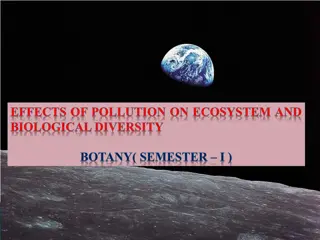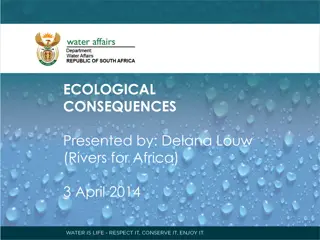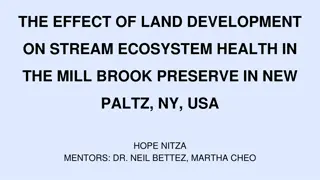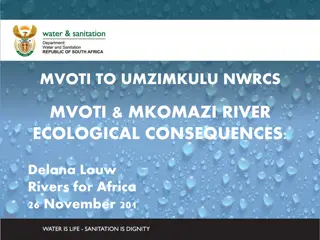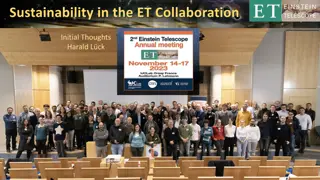Ecological Consequences of Lowland Stream Meandering
This study investigates the impact of deviating from geomorphological laws on lowland stream ecosystems. It focuses on stream morphology, composition, and macroinvertebrate communities, comparing natural meandering streams with channelized ones to understand ecological implications. Results highlight variations in stream bed composition and macroinvertebrate diversity, emphasizing the importance of restoring natural stream reaches for ecological health.
Download Presentation

Please find below an Image/Link to download the presentation.
The content on the website is provided AS IS for your information and personal use only. It may not be sold, licensed, or shared on other websites without obtaining consent from the author.If you encounter any issues during the download, it is possible that the publisher has removed the file from their server.
You are allowed to download the files provided on this website for personal or commercial use, subject to the condition that they are used lawfully. All files are the property of their respective owners.
The content on the website is provided AS IS for your information and personal use only. It may not be sold, licensed, or shared on other websites without obtaining consent from the author.
E N D
Presentation Transcript
Re-Meandering Of Lowland Streams: Will Disobeying the Laws of Geomorphology Have Ecological Consequences? Pedersen, Kristensen, Friberg, 2014, PlosOne, Volume 9, 1-10 Katie Halvorson
Overview Introduction to area Methods and ideas on project Results from project Summary
Where the study was done Catchment areas of Jutland, Denmark
Jutland areas based on last glaciation Western: ice-free Eastern: sub-glacial loamy moraine
Key Ideas: Determine how natural streams and rivers are structured Physical habitat Flow Sediment regime Improve ecological status of bodies of water in Europe
The goal: All restoration measures were aimed at creating a more heterogeneous and natural stream reach.
Morphology of river depends on: Catchment scale controls Hydrology, geology Differences in channel pattern at reach scale local slope, geology Variations in structure and composition bank material, flow, and turbulent structure
The study: 18 reaches selected 6 natural meandering streams with little alterations 6 channelized 6 formally channelized Field work done over 40days in April and May 2002
Looked at: Water chemistry Physical habitats Macroinvertebrates
Results: Composition of stream bed varied significantly among stream types. Cobble and pebble dominant in restored streams Sand in natural and channelized streams
Results cont. Natural streams width variation was significantly higher than in channelized streams. Macroinvertebrate communities differed in species by stream type.
Results cont. Huge change in physical habitats of the restored streams (pebble and gravel) compared to natural and channelized streams (sand). Stream bed slope differed between the three High slopes = restored Lowest = channelized
In summary: Natural functioning of the geomorphological process is affected by both channelization and restoration and that restoration DOES NOT re-establish the natural functioning at a 3+ year time-scale.
